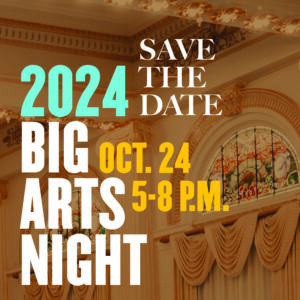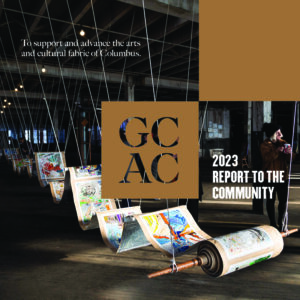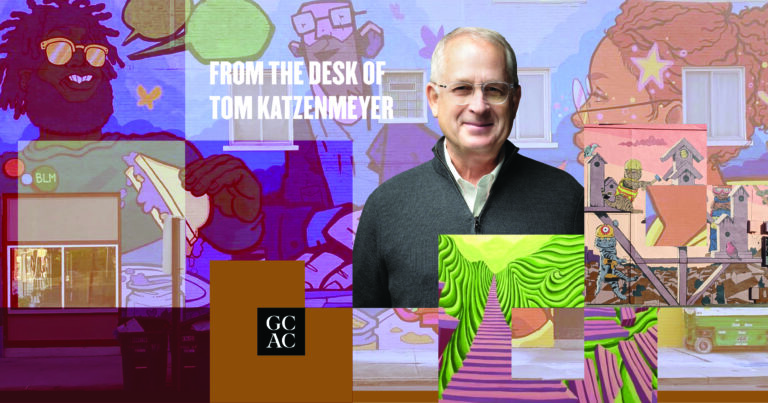We recently published a State of Public Art report for Columbus and Franklin County and I’d like to take a few minutes to talk about it.
First, a little context. Last summer we started the process for developing a countywide public art plan. We did this with the support of the city and county. We established a 20-person steering committee made up of artists, funders, educators, civic leaders and community members to guide the work, hired Lord Cultural Resources to tackle the substantial research and Columbus cultural leaders Marshall Shorts and Jonna Twigg to head up public engagement.
Where we are now:
- An environmental scan was published in September and includes extensive data on peer cities, looking at what they are doing, what is working for them and what isn’t. This data will help us determine what funding mechanisms, administrative structures and more will best fit Columbus.
- The State of Public Art report is now available. It references the environmental scan but really dives into what is happening here and how the public feels about what is happening here.
- We are continuing public engagement to discuss the State of Public Art Plan. The public engagement will impact the final plan, which will be released this summer.
As the title suggests, the State of Public Art report tells us where the greater Columbus area currently stands with regards to public art. To be clear, this is not a current inventory of public art (an inventory can be found on ColumbusMakesArt.com/public-art); but rather an analysis of our current ecosystem—i.e. the existing structures, entities, systems, protocols and procedures that govern precisely how public art is proposed, commissioned, managed and maintained in greater Columbus.
I wasn’t surprised by the report’s findings, but I am gratified for the more complete picture I get from looking at the data and conclusions in one place.
A few highlights that stand out to me:
Currently people find the process for getting public art funded and approved in Columbus cumbersome, and there is confusion as to when the existing Art Commission and other entities need to be involved. This feedback came from artists, business owners, city staff and public art funders.
Researchers identified 10 peer cities (see page 11 of the report) to focus on as we seek ideas and best practices for a plan to serve greater Columbus. While each of those cities has a unique approach to their public art plans, the cities with the strongest public art programs (i.e. the highest volume and quality and broadest geographic dispersion) have a percent for art program to help fund public art. These programs set aside a specific percentage of capital improvement dollars to fund public art. A percent for art program can apply to public/municipal development, private development, or both. Columbus currently does not have any percent for art program.
Columbus’ public art is concentrated in the center of the city (downtown, the Short North, Franklinton, etc.) while many Columbus neighborhoods have no public art. In addition, most of the people we heard from don’t see themselves reflected in today’s public art ecosystem.
When you think about the many ways in which public art can enhance public affinity for a place, a sense of community and celebrate each neighborhood’s unique culture, having neighborhoods without any public art is unacceptable for our city.
Columbus has an opportunity to not only enhance neighborhoods with public art but do so in a way that engages each neighborhood’s community and diverse cultures. The report dives deeper into the benefits of public art on pages 7 and 31.
There is a lot more to the report. I strongly recommend you at least take a look at page 20, which breaks out some of the key takeaways.
In the end, my key takeaway is that Columbus has a lot of opportunities within the public art space that better embrace its multiple benefits—those listed above as well as economic development and workforce development. I believe that our city leaders see the value of investing in public art and are ready to embrace a robust plan that ensures equitable funding and public art placement, a user-friendly approval process, a plan for art maintenance and more investment in and engagement with neighborhoods and communities.
This work has been done well in other cities and I truly believe Columbus can do it even better. Done right, public art should be for ALL of us.






